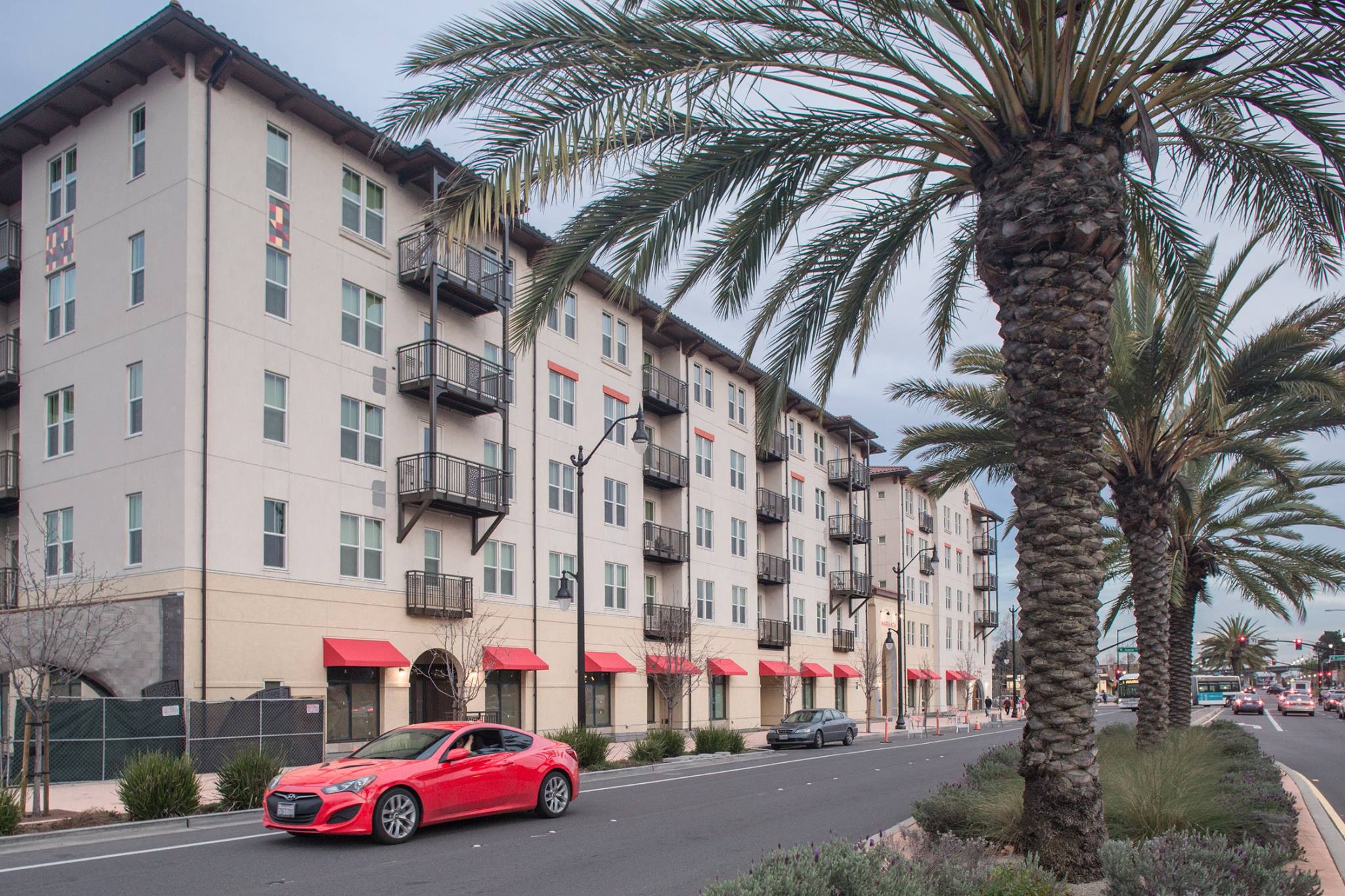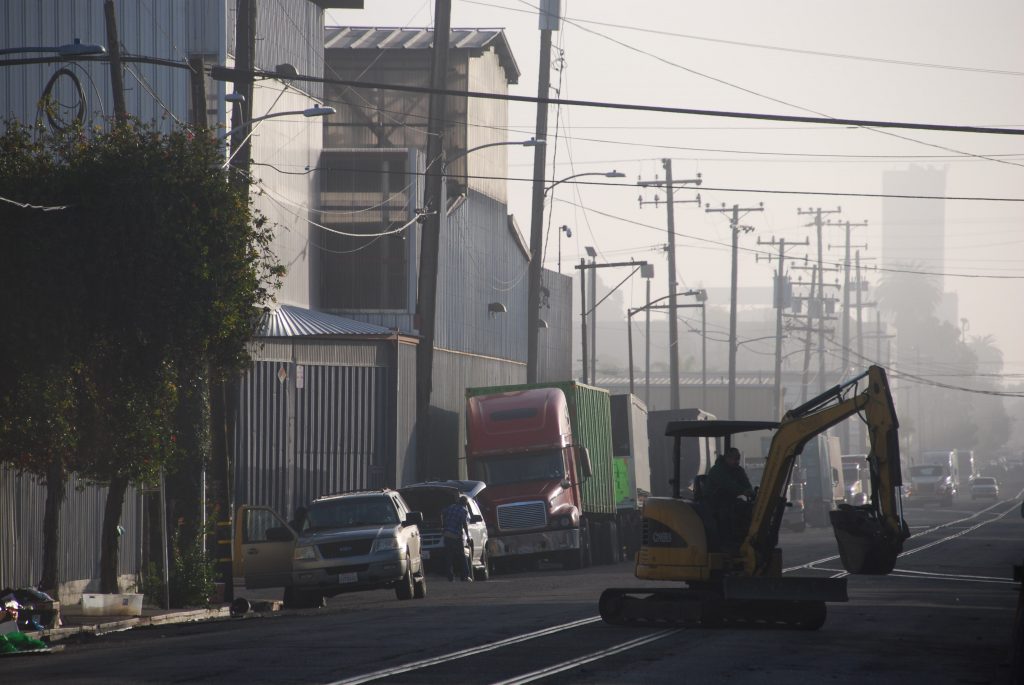In May, affordable housing advocates celebrated the grand opening of 115 apartments on land that used to be a parking lot at the San Leandro BART station, while simultaneously breaking ground on 115 more units for seniors. In March, the Oakland City Council approved a 260-foot tower at the MacArthur BART station. And later this year, BART hopes to have another groundbreaking for new housing at the Coliseum station.
In fact, for most of its 45 stations, BART has some kind of development project either completed, underway, planned, or has some future intention to build.
In recent years, advocates have come to see building around BART stations as a way to alleviate some of the community’s most intractable issues, from the regional housing crisis to global climate change. For BART, it’s a philosophical shift that’s been a long time coming.
“I think BART is now in a place as are so many government agencies, from like school districts, college districts, the UC system, where we all realize that we’re in this housing crisis, and folks can’t afford to live here,” said BART Director Nick Josefowitz, who in his short time on the BART Board of Directors has become one of its biggest proponents of transit-oriented development. “People’s kids can’t afford to live here, and we need to do what we can to chip in and build the kind of housing that our region is so desperately in need of. There’s no better place to build housing than around a BART station.”
BART has been hard at work making that idea a reality, though it can take years and even decades to get a project built. Still, since issuing its first transit-oriented development guidelines in 2003, BART has completed or partially completed development projects at 11 stations, and the BART board has approved 11 more. Five further projects are currently in negotiations.
But BART hasn’t always been so gung-ho about incorporating its stations into the surrounding community. In its early days, BART was designed largely as a park-and-ride system to bring people from outlying areas to downtown San Francisco, which was great for San Francisco and contributed to a revitalization of its Market Street corridor, but was devastating for many East Bay neighborhoods, especially West Oakland.
West Oakland’s Seventh Street corridor was once booming in the 1940s with businesses that catered to black people who were working on shipyards, military bases, and railroads. Known as the Harlem of the West, Seventh Street was dotted with jazz clubs, barbershops, grocery stores, newsstands, and restaurants.
But a series of public works projects basically destroyed the vibrant community, including the construction of interstate highways, which walled neighborhoods off from each other, and the post office. When BART construction started in the 1960s, it “eviscerated what was left of Seventh Street, once the heart of the city’s black business district and its eclectic immigrant shopping area,” wrote Brown University professor Robert Self in his 2003 book about Oakland history, American Babylon.
“They didn’t care,” said Chris Iglesias, CEO of the Unity Council, a nonprofit devoted to community development in East Oakland. When BART built its tracks in East Oakland, there was no consideration for building them underground, and planners’ attitude toward those communities was, “forget it, we’re going to cut right through these neighborhoods; the BART tracks are up in the air, and that’s the way that we’re going to do it,” Iglesias said.
A tipping point came in the early 1990s, when BART started planning to build a new parking lot near the Fruitvale station that would have cut off neighbors from the BART station and the business district on International Boulevard. The community objected, seeking to build something that would benefit the neighborhood, not people looking to park there and take BART elsewhere.
The Unity Council was instrumental in planning and opening the Fruitvale Transit Village in 2004. In addition to housing and retail, the transit village is now home to an early childhood education center, a senior center, and La Clinica De La Raza. It’s become not only a model for transit oriented development, but also for community engagement in taking on these kinds of projects.
For Iglesias, part of that engagement should be acknowledging the at times ugly history of BART and making sure to design a project that integrates not only with the community’s needs, but the existing aesthetic and history. “You can’t ignore—especially in Fruitvale and other parts of Oakland—the struggles that have been here for generations,” Iglesias said. “I think, in Fruitvale, everything around Oscar Grant and what that means to the community, you can’t ignore that, it’s part of what the Fruitvale is.”
BART implemented its first transit-oriented development policy shortly after the Fruitvale project opened, for the first time de-emphasizing parking around its stations by no longer requiring a one-to-one ratio for replacement parking in development projects. Projects planned since 2005, like at the MacArthur and San Leandro stations, have been designed for fewer parking spaces in favor of more housing and retail.
Last year, the BART board passed a policy setting a minimum of 20 percent affordable housing in its transit oriented development projects, but aiming for 35 percent. So far, it’s fallen short of the higher goal. Of the projects that have been completed, 27 percent of the housing is affordable: 408 of 1,530 total units at eight stations.
Other forthcoming projects in Pleasant Hill and Walnut Creek have no affordable housing planned, while half of the 110 units planned at the Oakland Coliseum station will be affordable and 17 percent of 877 planned units at MacArthur will be affordable. That will give BART an overall ratio of about 23 percent affordable.
BART is seeking to build more, but funding for affordable housing has grown scarce since state redevelopment funding ended in 2011 and funds are just about exhausted from Proposition 1C, a $2.9 billion statewide affordable housing bond passed in 2006. Voters in Alameda County did provide some help in November by passing Measure A1, a $580 million affordable housing bond, which will help fund 94 more below-market-rate units at Fruitvale station.
Of course, BART stands to benefit substantially from successful transit-oriented development, not only from collecting revenue from land leases and contracts, but potentially from increased ridership as more people live near stations and take BART as their primary mode of transport.
“We have revenue [from leases] coming in, it’s still a pretty small part of budget, but we expect it to grow over time,” said BART board President Rebecca Saltzman, who lives in Oakland and represents eight stations in Alameda and Contra Costa counties. “Beyond the direct lease revenue, we gain riders. If you want to live that close to BART, you probably want to ride it.”
Another strategy is to build office space at East Bay BART stations. Because trains heading to San Francisco in the morning are nearly at capacity, BART could gain riders by creating jobs in other areas of its system, creating so-called “reverse commutes.” BART is planning more development along these lines at the West Oakland, Lake Merritt, San Leandro, and the newly opened Warm Springs station, among others.
Plus, the emphasis on public transportation in this kind of development could help cut greenhouse gas emissions by reducing driving. “What we need to do to rein in climate change is we need to build dense housing and office space near transit, near BART stations, and near bus hubs,” Saltzman noted.


